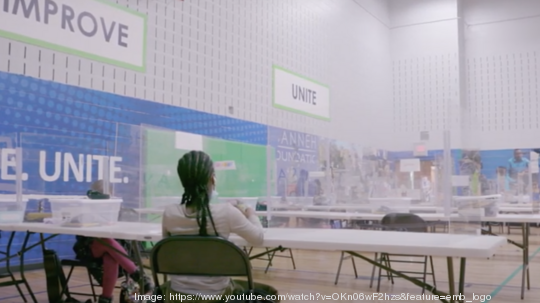
Following a year marked by the pandemic, telecommunications company Comcast Corporation is ramping up its efforts to bridge the digital divide.
For the second time in less than 12 months, the company is increasing the speed of its Internet Essentials service — its affordable broadband program for low-income households — to support students and families during an era of distance learning.
The speed of the Internet Essentials Service will soon double from 25 Mbps to 50 Mbps download, and from 3 Mbps to 5 Mbps upload, according to the company. The bump will be available to all new and existing customers starting March 9 at no additional cost. Currently, the cost of the service is $9.95 a month, a rate unchanged since the program first launched nearly 10 years ago.
“With these speeds, families will have even more bandwidth for distance learning and remote work, as well as accessing healthcare information, enjoying online entertainment, and staying in touch with family and friends during the pandemic and beyond,” said Comcast Director of External Communications, Jill Hornbacher.
“There is no doubt that having access to the internet and connectivity is important — and it’s now more important than ever,” Hornbacher added. “The Internet Essentials program has been key to us doing our part to ensure low-income Americans get the connectivity they need.”
Hornbacher points to a recent report from Common Sense Media that states even though the United States made progress in the past year, millions of students remain digitally underserved.
While Comcast has been a “part of the digital equity conversation” for over a decade, Hornbacher says the wake of the pandemic has further exposed the challenges many Americans face accessing broadband. And with the country still grappling with the pandemic, the need to support both distance and hybrid learning is crucial.
As part of the Internet Essentials program, the company also offers families the opportunity to purchase a laptop for less than $150, and works closely with non-profit organizations and school districts that wish to sponsor families who simply can’t afford the monthly service rate on their own.
“The reality is there is a barrier to this digital equity piece, and there are several things that contribute to that: cost, accessibility, and digital literacy and training,” says Hornbacher.
Since launching the Internet Essentials program, the company has helped to connect more than eight million low-income families to the internet at home.
Last month, Comcast also announced the company is accelerating its multi-year Lift Zones program with community centers across the country, including here in the Twin Cities. Many of the centers lacked the infrastructure or broadband speeds to support their members.
The Lift Zones initiative, geared to help address the homework gap, provides community centers with free, robust high-speed WiFi for up to three years, and provides students with a safe and adequate space to learn. While a few hundred centers across the country have already been successfully launched, Comcast has made its mission to connect more than 1,000 locations by the end of the year.
Local community partners have included the Boys and Girls Clubs of the Twin Cities, the Phyllis Wheatley Center in Minneapolis, The Sanneh Foundation at Conway Community Center in St. Paul, and Perspectives Family Center in St. Louis Park. At least 31 Lift Zone sites are now active in the region.
Continued collaboration between nonprofit and community-based organizations, educational institutions as well as the government and private sectors is the key to tackling the digital divide, Hornbacher says.
“We are continuing to discover and work with additional non-profit partners to install Lift Zone locations, and working to build awareness about our Internet Essentials program to ensure families are aware of the program,” she adds. “But, there’s no one company that can fix it all — we all have to work together and make sure we’re closing the gap.”